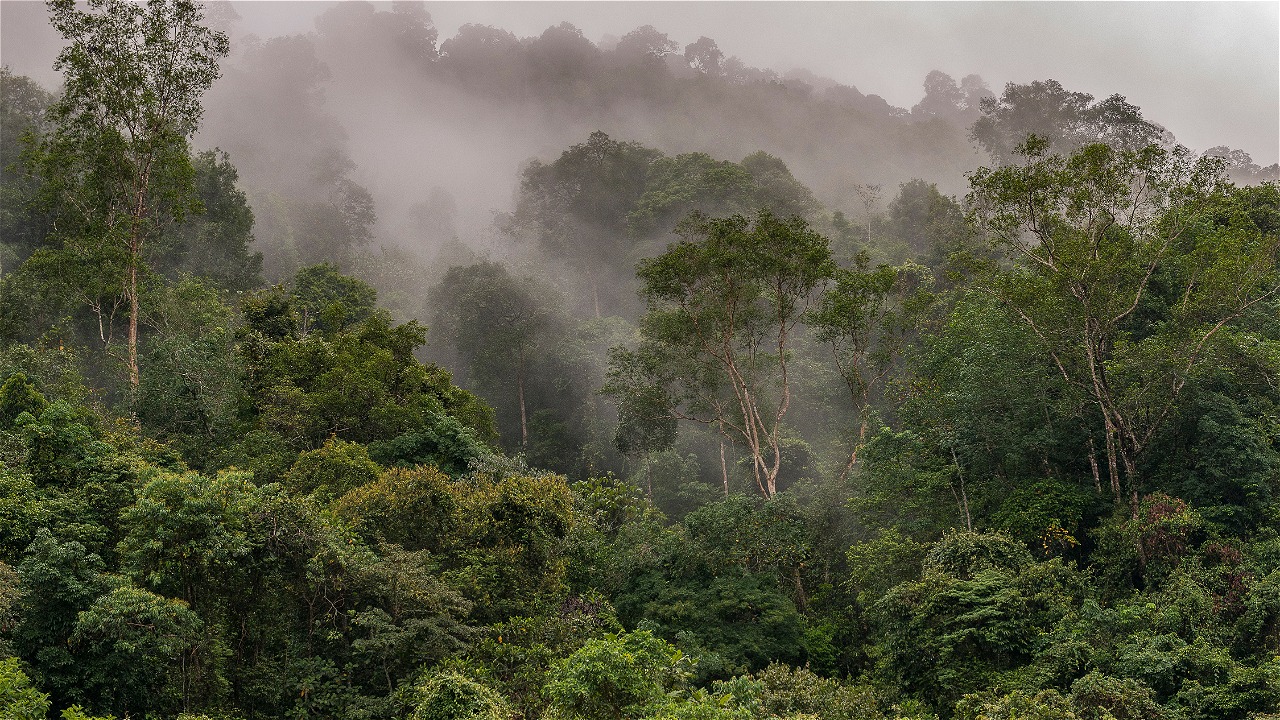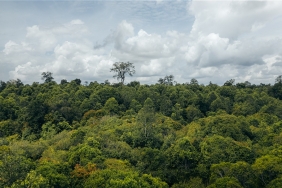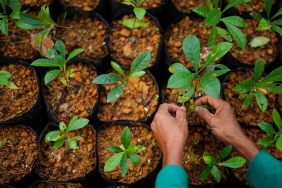THE ROLE OF THE IMBAU PROGRAM IN SUPPORTING RIMBANG BALING MANAGEMENT
By: Sunarto (WWF-Indonesia Animal and Landscape Ecologist)
The Rimbang Baling landscape is a strategic area in central Sumatra that is home to a variety of rare animals and plants, as well as being a key habitat for the Sumatran tiger. Located in the southwestern part of Riau Province and partially encompassing West Sumatra Province, it is also the headwaters and main water catchment area of central Sumatra. The core of this landscape is the Bukit Rimbang Bukit Baling Wildlife Reserve (SMBRBB), covering more than 140,000 ha.
WWF has been working in this area since 2004. Initial activities focused on surveying the presence, distribution and ecology of tigers and their prey. At the same time, given the need, a tiger protection team was also established and activated in collaboration with the Riau BKSDA.
From these two activities, various threats began to emerge and began to undermine parts of the area. These threats include illegal logging, coal and gold mining, conversion of forests to plantations, and expansion of cultivation areas. But on the other hand, the team also found a lot of potential for animals, natural beauty and the culture and wisdom of the community's traditions that have the potential to be developed and used as examples in the management of conservation areas.
IMBAU Program
In 2015, IUCN (World Conservation Organization) and KFW (German Development Bank) opened a funding opportunity for integrated tiger habitat conservation. The funding scheme is a manifestation of the German government's support for global tiger population recovery efforts launched at the 2010 Tiger Summit in Russia. At that time, leaders from all tiger-owning countries present agreed to restore global tiger populations and habitats. Indonesia was included.
WWF, which since 2012 has made Rimbang Baling one of its global priority landscapes, seized the opportunity to support the Indonesian government in managing the SMBRBB. WWF brings together YAPEKA (Yayasan Pendidikan Konservasi) and INDECON (Indonesia Ecotourism Network) as consortium members and strategic partners who can complement the capacity needed to achieve the program's targets. YAPEKA is a highly experienced and competent organization in community development and sustainable livelihoods to support nature conservation. Meanwhile, INDECON has been known for its work in various corners of the archipelago and its capacity in ecotourism development has been recognized worldwide. The consortium and program formed on August 4, 2015 is then called IMBAU.
The IMBAU program aims to support efforts to improve the effectiveness of tiger population and habitat management by authorities by prioritizing multi-stakeholder involvement and support, through three components. The first is the Integrated Protection and Monitoring Component which, among others, contains an intensive tiger monitoring program with camera traps that cover the entire tiger range in SMBRBB. At the same time, community awareness activities that focus on protection, SMART patrols, capacity building, and protection infrastructure development are also carried out. Everything is done by prioritizing the importance of the role of the community.
The second component is the Effective Management Component, which carries out programs to mobilize multi-stakeholder support for the management and protection of the area, increase the capacity of managers and partners, encourage and strengthen the necessary supporting policies, and support the preparation of area management plans.
The third component is Stakeholder Engagement and Co-benefit, which begins with exploring knowledge, practices and understanding community attitudes about conservation and its various related aspects, identifying potential sources of sustainable and environmentally friendly income, developing environmentally friendly energy, developing ecotourism, and developing plantation and forest plantation management practices that support conservation efforts (commonly known as Better Management Practices - BMP).
One of the challenges of implementing this program is to maintain the integration of each of these components. This is not easy to do, especially for team members who are required to focus on the activities they oversee, and for some communities who still have difficulty understanding processes that sometimes take a long time and on a wide scale.
Program Achievements
The IMBAU program, of the 3.5 years planned, is now in the middle of its implementation. There is still a long way to go to reach the ideal conditions expected. However, there are some achievements and early indications of success that are worth mentioning to be a lesson and at the same time a challenge to continue.
From the integrated protection component, some successes that can be mentioned include the increasing intensity of tiger and habitat protection efforts, as documented through the SMART database system. In addition, the protection team has also succeeded in making persuasive approaches to several "encroachers" and tiger poachers to stop activities that could threaten tigers and the SMBRBB forest area. As a result, there have been three community leaders who are willing to surrender land inside the SMBRBB area that they had managed, totaling 58 ha. Meanwhile, three poachers have been sensitized to voluntarily stop their illegal and criminally punishable activities.
From the tiger monitoring program, thanks to the support of the Integrated Tiger Habitat Conservation Program (ITHCP) IUCN-KFW, since six months, intensive monitoring of tiger and prey populations has been carried out. All SMBRBB areas potentially inhabited by tigers have been fitted with camera traps which will be ensured to remain operational for a full year. There are more than 350 camera units prepared to support this program. The interim result of this program is the availability of a tiger population baseline for this area. It is hoped that intensive monitoring activities will result in an update of the tiger population, as well as a deeper understanding of tiger ecology, prey and the diverse biodiversity therein.
Public and community awareness programs have also increased and intensified since the implementation of the IMBAU Program. This has been done from villages within the SMBRBB area, on the outskirts of the area, in the provincial capital, in Jakarta, and on social media through various platforms. The goal of public awareness activities is to support integrated protection of tigers and their habitats by various parties as mentioned above.
From the Effective Management component, the IMBAU Program supported the authorities in proposing Rimbang Baling to be managed under the Conservation Forest Management Unit (FMU) scheme. This support was followed by ensuring the operationalization of the KPHK through the development of a Block Plan (RB) and Management Plan (RP). Study materials supported by the IMBAU Program, whether directly conducted by the team or by students, lecturers or researchers from campuses and research institutions, were used as important input materials in the preparation of the RB and RP. The IMBAU Program also fully supported the consultation process of the RB and RP to various parties, including the Public Consultation on the draft RB and RP conducted in June 2017.
From the Stakeholder and Community Engagement Component, the YAPEKA and INDECON teams have worked systematically and diligently in the field, starting from understanding the problems and potential, and together with the local community to develop various potentials for environmentally friendly sustainable livelihoods and ecotourism. Several demonstration plots, both for renewable energy such as biogas, and organic farming utilizing the yard have been built together with the community in areas that are considered strategic. Meanwhile, based on tourism potential, ecotourism management plans and community capacity building have begun to be developed. Slowly, the dialog between the area manager, and the community around the area, is now starting to look more fluid.
Many programs are still in planning and have not yet been implemented. The commitment of the IMBAU team, local communities, government, funders, partners and the support of various parties will determine the success of achieving the expected conditions in Rimbang Baling, namely the preservation of tigers and diverse biodiversity that also supports the improvement of the welfare of the surrounding communities.





